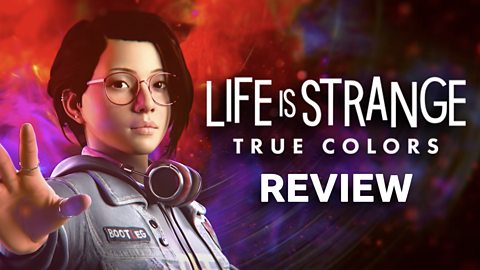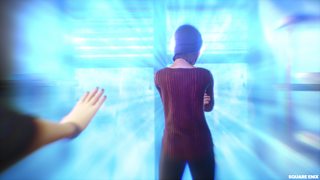How Life is Strange: True Colors taught me about empathy
By Ashley Dick // ΒιΆΉΤΌΕΔ The Social contributor // 8 September 2021
How can video games act as tools for exploring empathy? This was the jumping off point for the team behind Life is Strange: True Colors.
In this spoiler-free review, I explore how in a time of collective isolation, True Colors presents an outlet for connection and hope against all odds.

Life is Strange: True Colors review
Ashley Dick reviews the latest entry in the Life is Strange series.
We view the world from the vibrant lens of Alex, a troubled young woman who emerges from the distresses of foster care into a dreamy Colorado town, aptly named Haven.
The world of Haven is a feast for the eyes and the game indulges in slow, cinematic unravelling to completely immerse you in its comfort. The beautiful, towering mountain range, picturesque small-town living, and the locals’ friendly nature makes Haven the epitome of ‘too good to be true’. Not only does the town have its challenges, but Alex herself is a sort of super-empath. She sees colours surrounding people when they are feeling extreme emotions, and when close enough, she starts to feel those emotions herself. This gives her an insight into people’s pasts and a deep understanding of their state of mind, however euphoric or distressed they may be.
Throughout the game, Alex is faced with choices in the style of a choose your own adventure. Some choices come with more weight than others, which the game highlights to you.

If something could pop up and tell me ‘this action will have consequences’ in real life, I might be a much more virtuous person! None-the-less, I found myself taking it very seriously and making truly informed choices based on my feelings toward a situation. And if, like me, you wonder if you made the right choice, you have the option to replay the chapters and explore different actions.
The exploration of ‘what if’ that has been central to the Life is Strange series so far, providing a space for reflection and assessment of choice. Although we can’t redo our choices in real life, thinking about the impact of our actions and the influence we have is valuable to our growth and understanding of ourselves.
The choices sometimes challenge your own sense of virtue and ideology. If you choose to people please, you’ll protect your own wellbeing, but pass on the chance of an honest conversation. If you get confrontational, you might get closer to the truth, but you’ll suffer the devastation of being disruptive. I found myself much more willing to take conversational risks as Alex than I would in my own life, perhaps this method of roleplaying allows the mind to experience discomfort and catharsis in a controlled environment, strengthening the player’s overall sense of empathy for others.
The game delivers a nuanced perception of emotion, as displayed in an extremely compelling encounter with a character struggling with anger. Her anguish at simultaneously loving and protecting someone whilst blaming them for her misery addresses how complex our emotions truly are.
Life is Strange: True Colors is for anyone who wants to connect on a deeper emotional level and explore the impact our choices have on others. If the game makes you sit back and reflect at all, then it has made the world that little bit better.
We feel more intensely when our emotions are contradictory to one another - hatred becomes more intense when spiked with love. This was a moving moment for me, as I navigated the decisions of how to help someone in such a distressed place. Although I knew this was a game with no real-life consequences, I carefully considered the wording of my support, and where to focus the conversation. Do I let her express her anger or do I try to calm her down? What long term impact will my decision have?
The game addresses the subject of mental health with a great deal of care. In fact, the main menu offers a link to help for anyone struggling with the themes explored in the game. What I appreciated most was the honesty with which True Colors portrayed wellbeing and mental illness. Again, it didn’t use shortcuts or generic traits to show characters’ suffering, it dug much deeper, exploring the complexities of emotion, and how moods cannot be changed in a flash. The game also builds in zen moments, where Alex will settle into a spot, briefly reflect on her thoughts, and absorb the present. The zen moments last as long as you need them to, providing a space within the game to digest, think and feel at peace.
The town of Haven truly feels like a character in itself. As mentioned before, it is beautifully crafted with a valley shape and perpetual warm glow, making it feel like Alex is living inside a hug.

I was surprised to learn the events of the game take place in Spring, as the warmth of the town conjures such strong associations with Autumn, the whole place looks as though it’s been filtered through a pumpkin spice latte.
As the name of the game suggests, colour is such an important part of the experience. Something that, as a synaesthete, I can strongly relate to in real life. As the game progresses you begin to learn Alex’s colour associations, knowing what a character is feeling at just a glance. Whilst I can’t read people's feelings, I do associate colours with parts of people’s personalities and how they make me feel. When I learnt the significant role that colour plays within the game, I wondered whether the development team had taken the synaesthesia experience as inspiration.
Jonathan Zimmerman, Narrative Director at Deck Nine Games had this to say:
“As a dev team, we wrestled with the question of how to capture something as abstract as emotions. We found ourselves pushing the conventions of traditional Life is Strange storytelling, employing the tangible audiovisual representation of emotive sensations to drive the same response in the player that Alex herself feels each time.”
Whilst there is no explicit link with synaesthesia, the tools of converting one sensation into another, in this case emotion into audio and visual, share traits with the perceptual phenomenon.

I’ve always described my experience as having maps in my mind that I reference constantly and involuntarily. I think the same description could apply to Alex. At the very least, having this game to point to as one representation of how synaesthesia can look and feel is a huge milestone in helping others understand this neuro condition.
In terms of gameplay, the story takes precedence, which means cutscenes feature heavily and large periods of time are spent just watching and carefully making decisions. However, the game does diverge at times to provide variety in the form of arcade side games, a fantasy storyline with Tekken-esque battles and allows you to explore the town sandbox style.
Life is Strange True Colors is for anyone who wants to connect on a deeper emotional level and explore the impact our choices have on others. If the game makes you sit back and reflect at all, then it has made the world that little bit better.
The message here is that life is colourful, life is nuanced, and life is strange.




